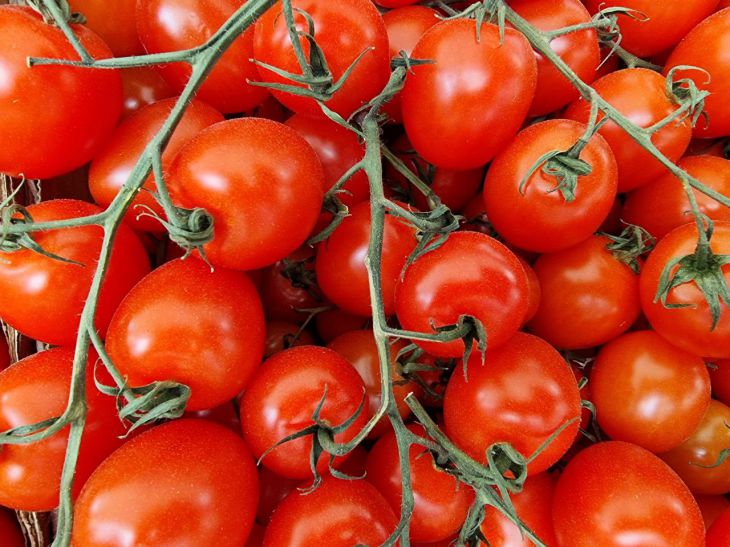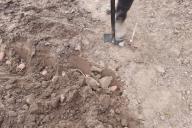Every summer resident strives to get a rich harvest of vegetables and fruits on his plot.
It is best to sow seeds for seedlings from March 15 to 20 (see the lunar calendar).
Preparing seeds for sowing should begin at the end of February. Soak the seeds in a weak (1%) solution of potassium permanganate for 10 minutes, says Anastasia Kovrizhnykh .
Then the seeds must be thoroughly washed and dried, and then soaked in a nutrient solution.
This can be aloe juice diluted 1:1 with water, 1 teaspoon of nitrophoska can be diluted in 1 liter of water, or in any solution of liquid fertilizer or in a solution of any plant growth stimulator.

After this, we place the seeds in bags and put them in the refrigerator for 3-5 hours, then in a warm place, while making sure that the fabric does not dry out and is slightly damp.
The seeds hatch on the 3rd-5th day, and now it’s time to plant them in containers.
We plant in small and low plastic boxes. Before planting, we water the soil with a weak solution of potassium permanganate and plant at a distance of 5 cm between rows and 5 cm between plants. Then we sprinkle all the rows with sand, this is a preventative measure against black leg. We cover the boxes with film and put them in a warm place.
As soon as the seeds begin to sprout, we remove the film and put the boxes in a permanent place. The temperature is 20 degrees, and it is necessary to illuminate the seedlings so that they do not stretch out for 12-14 hours, using various methods of illumination.
When the seedlings have grown and 2 true leaves have appeared, the temperature should be reduced to 16 degrees. After 10-14 days, we transplant them into separate disposable cups, water them with a growth regulator, and spray them against fungal diseases and late blight.
To do this, pour a glass of skim milk or kefir into a liter jar, add cold boiled water and 2-3 drops of iodine and spray with this composition 2-3 times, you can combine it with fertilizers.
We apply top dressing once every 10 days: this can be a solution of nitrophoska (30 g per 10 liters of water), 1 teaspoon of liquid fertilizer "Agricola" or "Ideal", an ash solution, a solution of potassium and sodium humate.
At the end of April we begin to harden them by taking them out onto a glazed balcony for several hours, depending on the air temperature. We plant the seedlings in the ground at the age of 50-60 days, when they reach about 20-30 cm in height and have 8-10 true leaves.
Before planting in the greenhouse, 3-4 days before, spray the seedlings with boric acid (1 gram of boric acid per 1 liter of water) and cut off the 2 lower true leaves.
It's time to plant tomatoes in a greenhouse, for this we water the soil well with warm water with potassium permanganate, make holes, add 1 handful of ash and 30 g of superphosphate to each hole.
The distance between plants is 45 cm, the same between rows.
Do not water the tomatoes for the first 12 days. Then water them once a week, and stop watering at the beginning of rapid ripening.
Be sure to mulch the soil with grass, and the layer should be at least 5 cm.
We spray the seedlings in the greenhouse with Zircon 3-4 times with an interval of 10 days.
The first feeding is done on June 10 with our "bread fertilizer". What is bread fertilizer? How to prepare it? Pour 1 bucket of manure, 1 bucket of crackers (we do not throw away stale, leftover bread all winter, we dry it) into a large container, collect young nettles, celandine and fill everything with water. All this stands for about a month - the fertilizer is ready, and it is enough to feed all the beds.
According to many summer residents, after using this "bread fertilizer" the soil became much better and the harvest increased. Add 1 liter of fertilizer to the bucket and water.
Tomato seedlings respond very well to this type of feeding and the main thing here is not to overdo it, otherwise they begin, as gardeners say, to get fat, i.e. leaf mass begins to grow and the tomatoes bloom poorly and do not set fruit.
Each time we water the tomatoes, add 4 drops of iodine to the bucket and spray with Fitosporin (prevention of late blight).
The second feeding is done after 14 days: a handful of ash and bread fertilizer per 10 liters of water.
Third feeding after 14 days - 30 g of superphosphate, 1 tbsp of nitrophoska per 10 l of water. You can do foliar feeding with superphosphate diluted in water.
We do the second feeding when the ovaries begin to form, and the third - when the fruits begin to grow and ripen en masse.
When tomatoes begin to bloom, you can use preparations that promote the formation of ovaries, spray with boric acid, and pick off the side shoots.
It is necessary to hang a thermometer in the greenhouse, it is very convenient to monitor the temperature regime, it should be 24-28 degrees, no more!
When tomatoes have set on the 1st brush, have reached their size, we begin to tear off the lower leaves, 2-3 leaves every other day, but we do not tear off all the leaves, it is believed that the plant receives nutrition through its leaves, so we tear them off, but without fanaticism. 40-50 days before harvesting (in early August), you need to pinch the top and all brushes with unblown flowers.
It is recommended to plant several basil and marigold bushes in the greenhouse, as they have a strong smell that repels pests.
Thus, by following all the listed techniques, you are guaranteed to get a good tomato harvest.
Earlier we told you what you shouldn’t water your indoor plants with to prevent them from withering away before your eyes.









